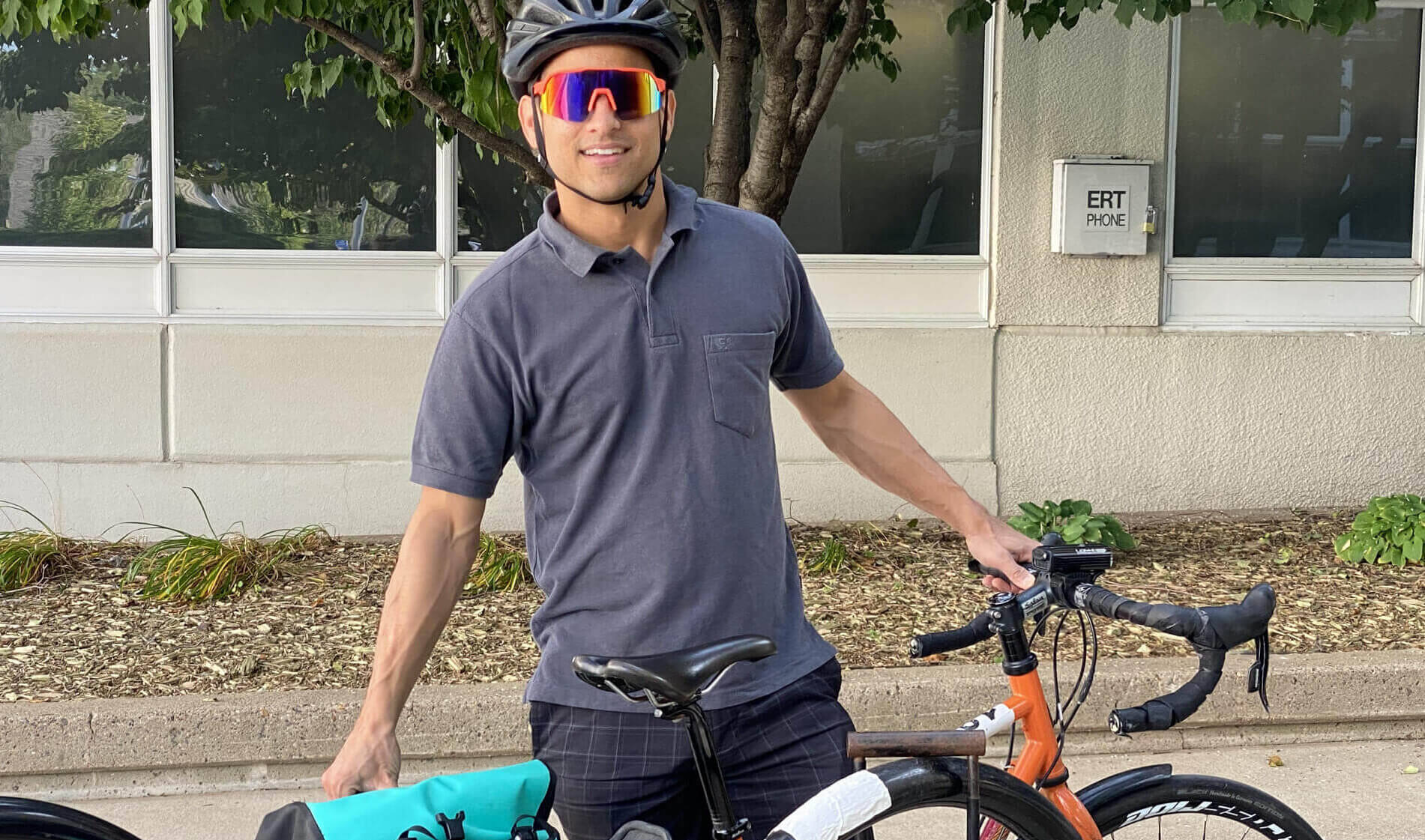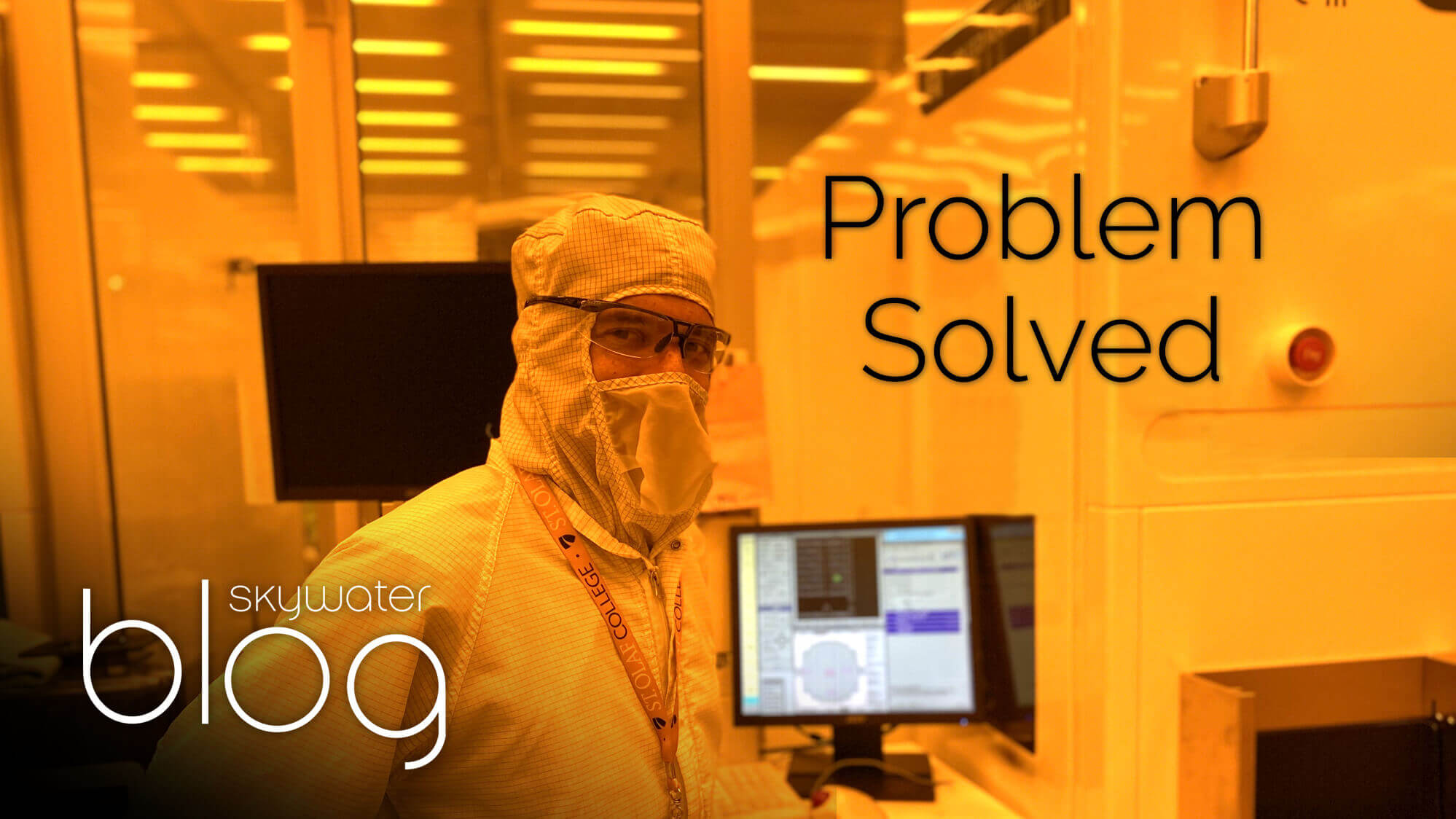
By R&D/OPC Engineer Rajan Vatassery
Solving the Unsolvable is an exciting daily challenge SkyWater engineers embrace in their quest to create new technologies and a range of chips for safer cars, implantable medical devices, satellites — and other highly specialized government projects that protect the United States. Eager to learn about the types of engineers SkyWater employs, and how they help us launch new technologies that have never been created before — we sat down with OPC Engineer Rajan Vatassery, a highly motivated problem-solver with a passion for the latest technology and here’s what he said….
I’ve always enjoyed solving puzzles and have a curious, bold-thinking mind
After graduating with a doctorate in materials chemistry from the University of Minnesota — I started my career at Intel — finding a job that matched my skills in optical proximity correction, or OPC. After working at Intel in Portland, Oregon for six years, family drew me back to Minnesota — and in 2019, I joined the SkyWater team as a technical lead — the person who interfaces between a customer and our factory.
I enjoyed that role because in a previous job I felt compartmentalized, whereas having a connection with the end customer as a SkyWater tech lead was exciting! Development was also faster and easier when cooperatively troubleshooting issues with a customer than when I had no contact with designers. After a year of being a tech lead, I moved back to OPC to be surrounded by more technical problems — and I still make sure I can get the full picture from the customer and designer.
At SkyWater there are many career paths for engineers — and numerous openings for entry level engineers, mid-career professionals and technology experts.
If you have an analytical, forward-thinking mindset and strong problem-solving skills, you should investigate SkyWater. Below are a few of the types of engineers SkyWater employs:
- Advanced Technology Services engineer (tech lead)
- Design engineer
- Platform integration process engineer
- Process development engineer
- New product introduction engineer
- Radiation hardening engineer
- Reliability engineer
- Quality assurance engineer
- Yield engineer
Engineering roles are some of the best paying roles in the semiconductor industry
Each job requires specialized knowledge and skills as the field is constantly evolving — and you can learn new skills on the job daily at SkyWater, and structure your own development. In my opinion, this is one of the best aspects of SkyWater; if you have a good idea that will improve the company’s performance while also developing your skills at the same time you will almost always get approval for your project!
The pay range for engineers at SkyWater is competitive to larger companies in California or Oregon. Combined with the lower cost of living in Minnesota, my move from Portland to St. Paul put us in a better spot financially — and the Midwest is much more family oriented.

At SkyWater, you’ll join us in developing experimental technologies that have never been made — anywhere
The feasibility studies that we are conducting on radiation-hardening processes for healthcare and aerospace & defense markets, for example, often make or break a new technology. When it ultimately catapults into large-scale production, it makes a big difference for not only our customers and SkyWater — but also for the industrial capabilities of the United States.
In healthcare, for example, advances in life sciences, automation, AI, and a range of enabling technologies are combining to enable scalable innovation in a growing variety of genetic sequencing, clinical diagnostic and medical device applications — and we’re driving these things forward each day.

When you’re walking a tightrope — which is what our manufacturing line does — there are gusts of wind that can blow you off. As engineers, we make sure that doesn’t happen by making changes to stabilize the path in front of us.
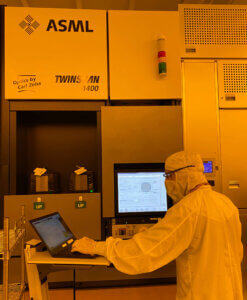
We take designs from our customers and develop ways to make their final product more manufacturable by removing as much variability in the process as possible, increasing process margin. Variability can come from a customer’s requirement/request to use a different material that gives the final product special capabilities such as superconductivity. Or variability could stem from a customer’s design being laid out in an unusual way that other designers haven’t thought of yet. More advanced tools are always arriving, offering additional ways for making a process better, such as the ASML TWINSCAN — as well as the game-changing Multibeam direct-write tool that will bring us capability no other large fab has had.
We always engineer the most robust process that we can — with robust margins to go along with it. For example, recently we had two different materials we wanted to test for a customer. One of them was a slightly more-dense glassy material and the other one was a less-dense glassy material. One of those materials is going to have a better process margin than the other— and we need to crunch the data to figure that out. All of the data that is relevant. All of our figures have merit and have to be crunched together to determine which material has the biggest process margin. Data analysis tells us the answer.
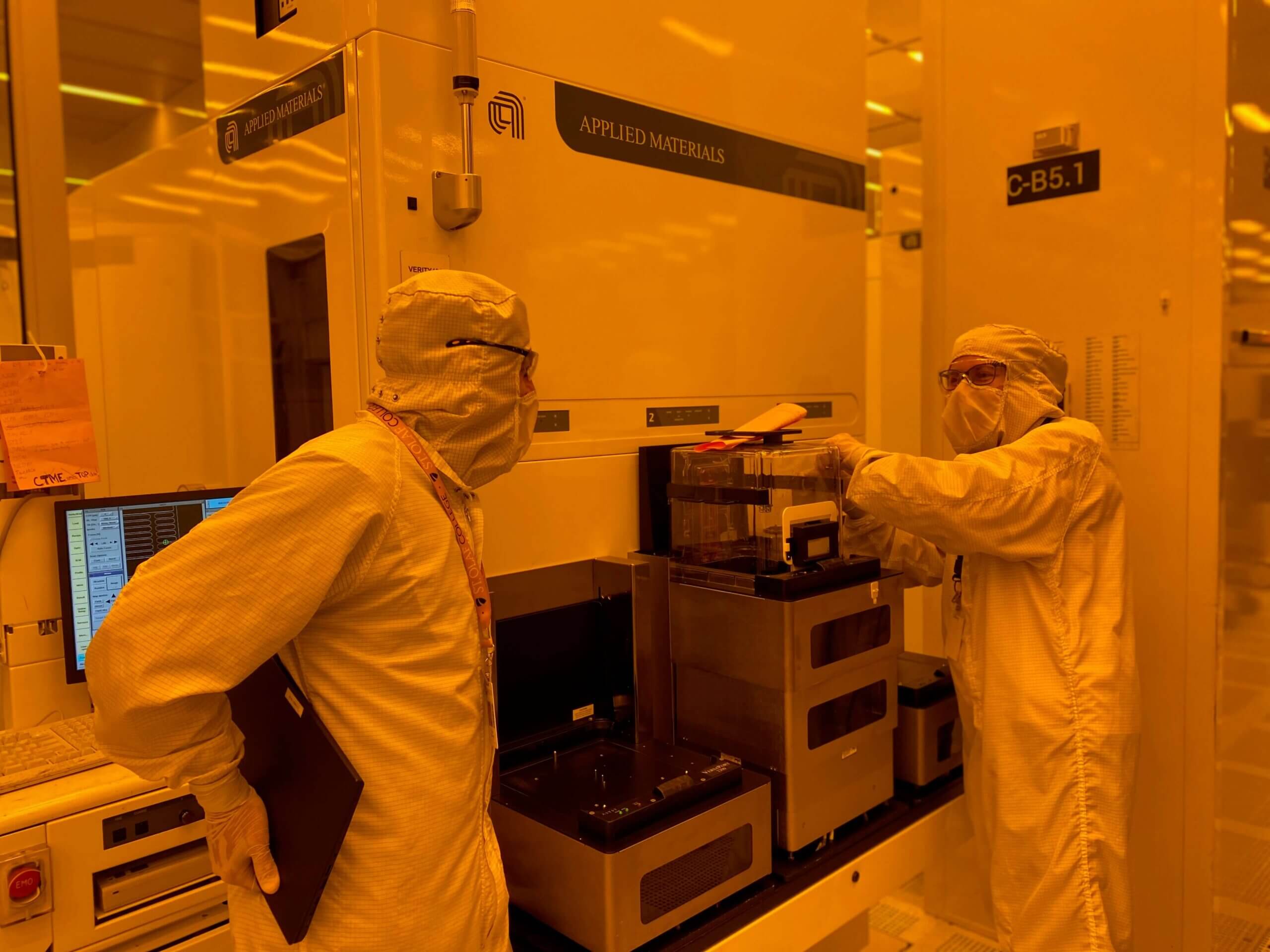
As America’s Trusted Foundry, if we make the best quality chips in the world — with the best processes and security possible, our chips will be in high demand — and no other company inside or outside of the United States will be able to compete with us.
A large portion of my day is consumed with making improvements.
For example, let’s say a customer sends us a design which has never been manufactured – anywhere. The design may require engineering improvements to the process the customer originally envisioned. This happens in most cases because we are the manufacturing experts. Our Advanced Technology Services, or ATS engineering side works hard to develop these improvements so the customer can move to production. At that step there are the same considerations. By building a robust foundation for the process we make sure that the process developed in ATS is going to run in our factory for a long time.
Data science is another big component of what I do.
We leverage several databases that contain process data, metrology data, and yield or sort data, for example. My job as an R&D engineer is to get data into a spot that is easy to make a decision on making something better. If I can convince myself, I can convince my colleagues.

When recruiting on campus, I tell students, “At SkyWater you can find a problem, dig into it, own it, and fix it.”
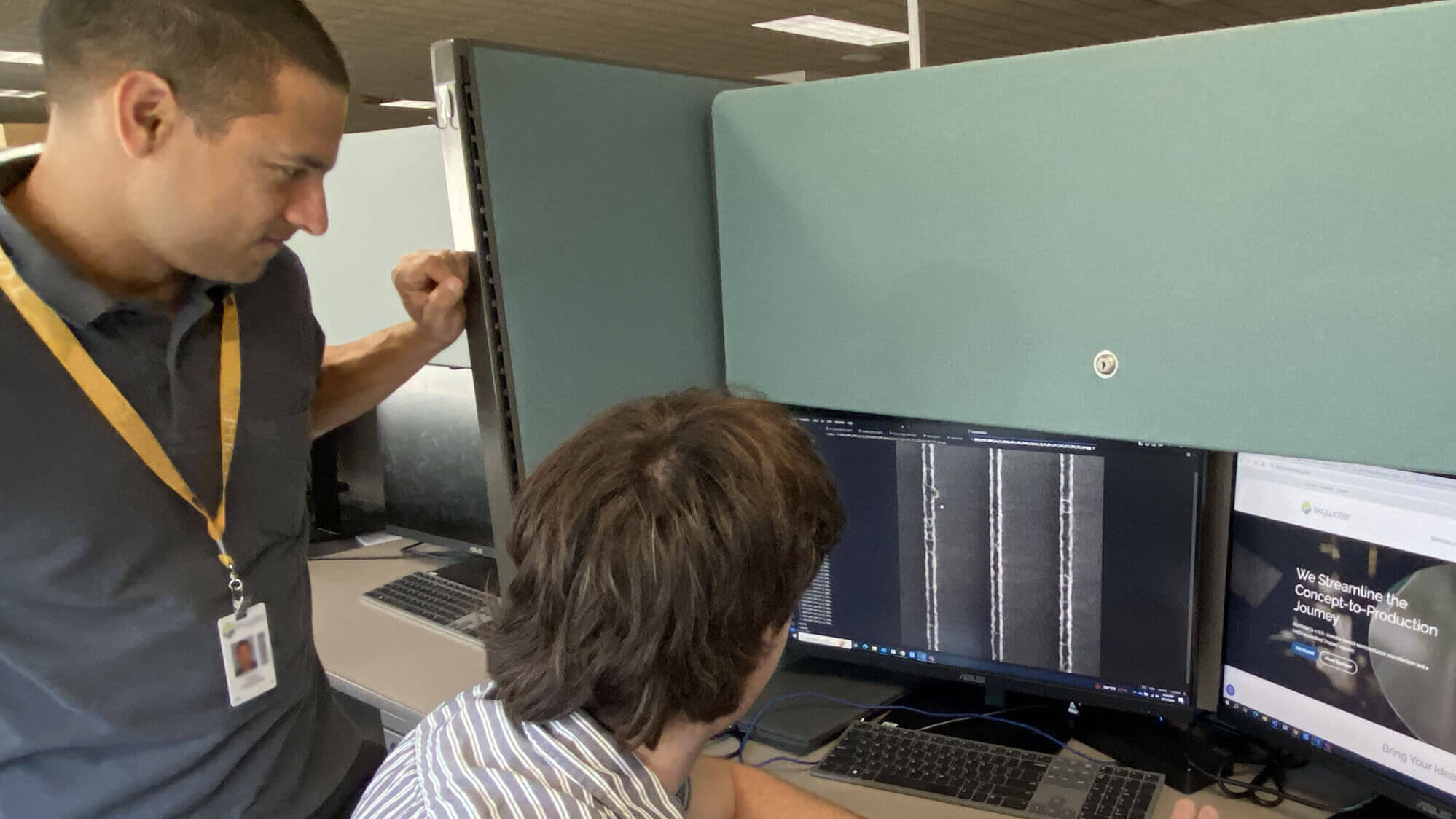
And SkyWater coworkers not only appreciate the effort and hard work that you’ve done, but they’ll also keep an eye out for you in in the future. And the scope of your involvement is deep too — so you have information about the big picture of how the technology will be used and can engineer it best.
I recruit for engineers and interns at Purdue, the University of Minnesota CSE and other technical colleges. Our student intern from the University of Minnesota student is working with the team to create a methodology to classify images from our SEM — or scanning electron microscope. High-performing interns often accept full-time jobs with SkyWater after they graduate. Some people are hungry for knowledge and just want to learn. That mindset blossoms at SkyWater.
I participate in SkyWater employee activities such as the MS150 Bike Ride
I can even bike to work, so it’s easy to build exercise into my routine. I put my bike on the bus on the way into work in the morning — and SkyWater is less than a mile from a major transit station, so I ride that portion to work. And then after work, I bike all the way home. It’s really nice to have mass transit so close. If it gets really cold, or I just don’t feel like biking — I put my bike on the bus. To ride in the winter, I have studded tires in case there’s ice on the road, although last winter I only used them once.
Why stay at SkyWater? We don’t have a lack of interesting problems to solve. And that’s one thing that keeps me here.
Some of my friends do Sudoku or play video games to challenge their mind with problems to solve. For me, my job is my puzzle. Every day I’m solving puzzles, and it is really intellectually engaging. I don’t need to go solve Sudokus or Wordles. I have all the puzzles I need when I put on the bunny suit and head into the fab. And I’m shoring up the United States’ semiconductor manufacturing base. I am contributing to valuable work each day, creating a career with purpose — which is also important to me.
 I returned to Minnesota to be close to family, and the summers are fantastic with lakes everywhere! The spring and fall are almost unbeatable—but I like the winter most because I can do whatever I want outdoors, and never get sweaty. Minnesota is also a great place to raise your family. The cost of living is low. It’s the best of both worlds—the excitement of the city combined with nature.
I returned to Minnesota to be close to family, and the summers are fantastic with lakes everywhere! The spring and fall are almost unbeatable—but I like the winter most because I can do whatever I want outdoors, and never get sweaty. Minnesota is also a great place to raise your family. The cost of living is low. It’s the best of both worlds—the excitement of the city combined with nature.
Parks in Minnesota are among the best in the nation, including the walking trails behind SkyWater. It’s so nice to get a little fresh air on a break. Another thing I enjoy are the concerts. Minnesota is home to some of the most famous musicians in the world — including Prince, Bob Dylan, The Replacements, Soul Asylum, The Jets, Charle Parr, Judy Garland, Jayhawks and many more — so if you enjoy concerts like I do, Minneapolis and St. Paul have so many venues that you could see a new act every night of the year for the rest of your life. The photo above is from a Portugal. The Man concert I attended at First Avenue earlier this year.
The tenure in our SkyWater engineering team is strong
And our engineering needs continue to grow as we are awarded government contracts and other important commercial contracts in biomedical and advanced sensing.
Are you bold thinking?
Find your place on our team and help us solve the unsolvable.
Browse Openings
